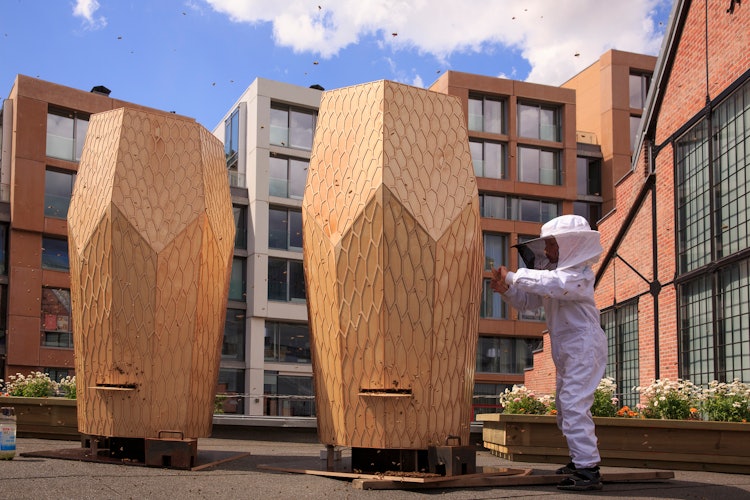Vulkan Beehives
Hive-Rise
2014
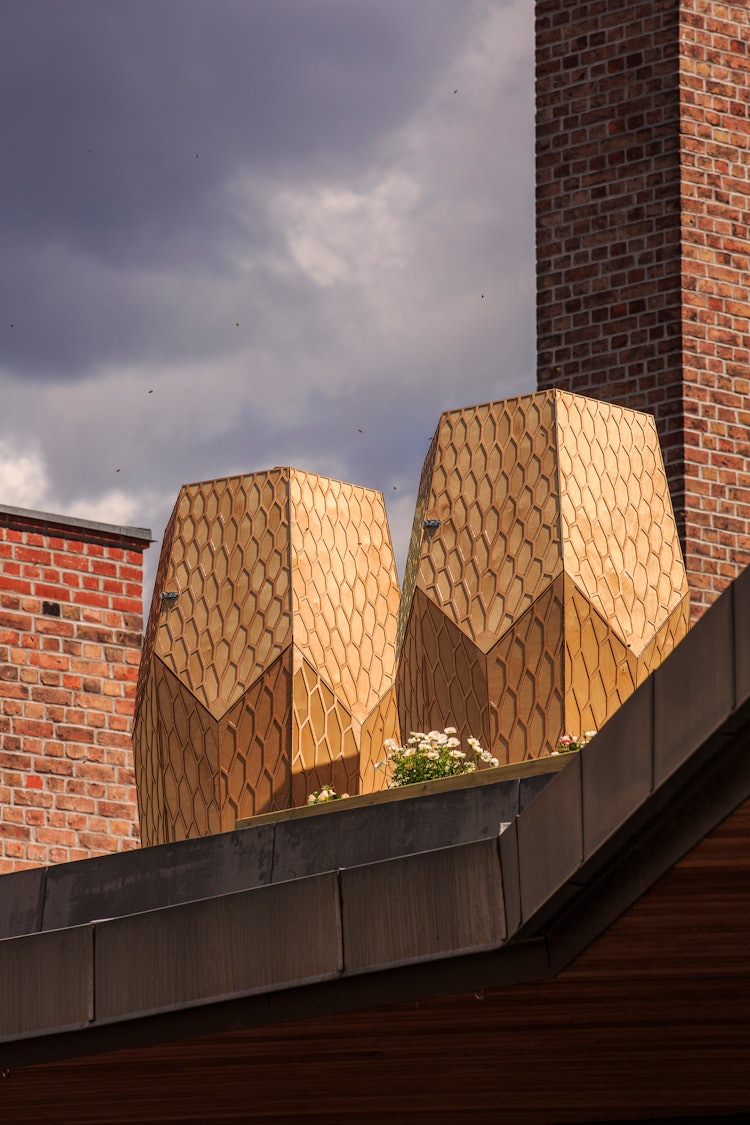
Introduction
Insects, birds and other pollinators are an integral part of our ecosystem, vital to the propagation of both wild and cultivated plants. Amongst the worlds most important pollinators are bees, which support fully one-third of all food growth in the world. In recent decades however, bee colonies have suffered a devastating at the hands of pesticides and habitat loss.
In 2014, we began our close collaboration with the passionate apiarist Alexander Du Rietz, who approached us with the goal of expanding his traditional beekeeping practice into an urban context.
The Vulkan Beehives were born out of a joint mission to raise social consciousness around colony collapse, and to provide a new model for urban housing for our agricultural partners.
Technical details
Heier Du Rietz
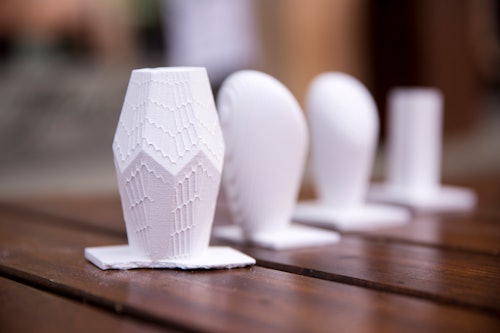
Photo: Morten Brakestad
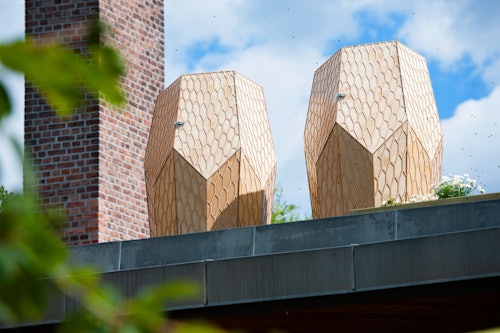
Photo: Finn Ståle Felberg
A revitalized cultural district
Situated along the western banks of Akerselva river, the Vulkan area of Oslo is a vibrant revitalized cultural district with new parks and the industrial-hall-turned-food market called Mathallen. Keeping urban longevity in mind, the Vulkan Beehives were included as part of the development of the area, broadening the scheme`s discourse on the relationship that link art and architecture to a more sustainable society.
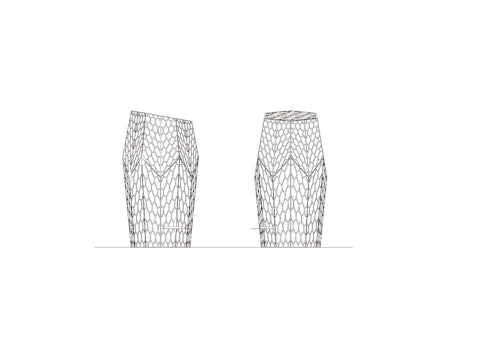
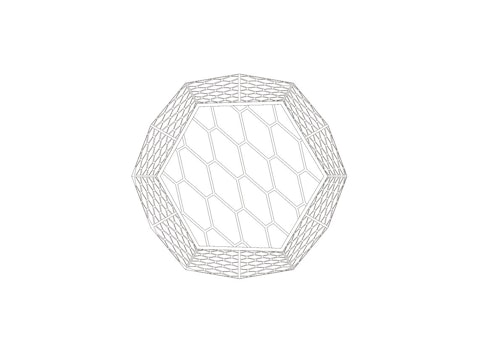
The collaboration with Du Rietz focused on the design of an attractive external shell that could be efficiently fabricated and inexpensively replicated. With this shell, the Vulkan Beehives are different from traditional hives, providing an enclosed, weather-protected space for the bees, as well as for the monitoring and sensory equipment that collects data on the bee`s activities.
The pair of hexagonal birch-plywood towers are lacquered in a warm honey color and inscribed with a honeycomb pattern, encasing traditional beehives boxes and the technical elements that supports the hives.
Their intriguing sculptural form is intended to attract the attention of people in the entrance plaza below, piquing curiosity stimulating conversation.
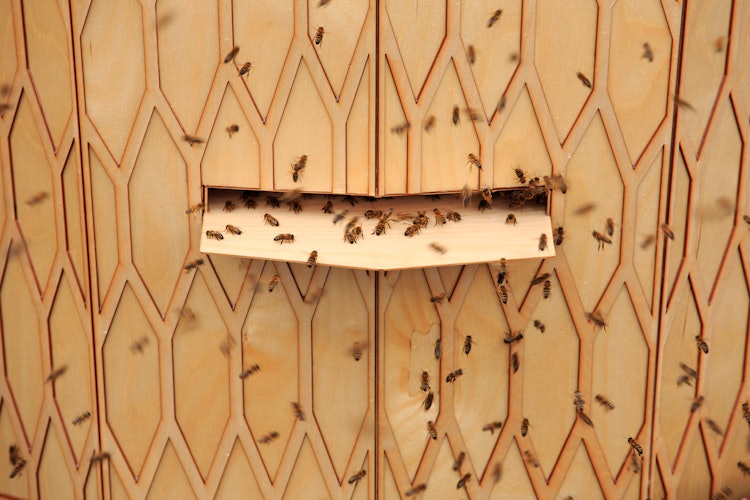
Photo: Morten Brakestad
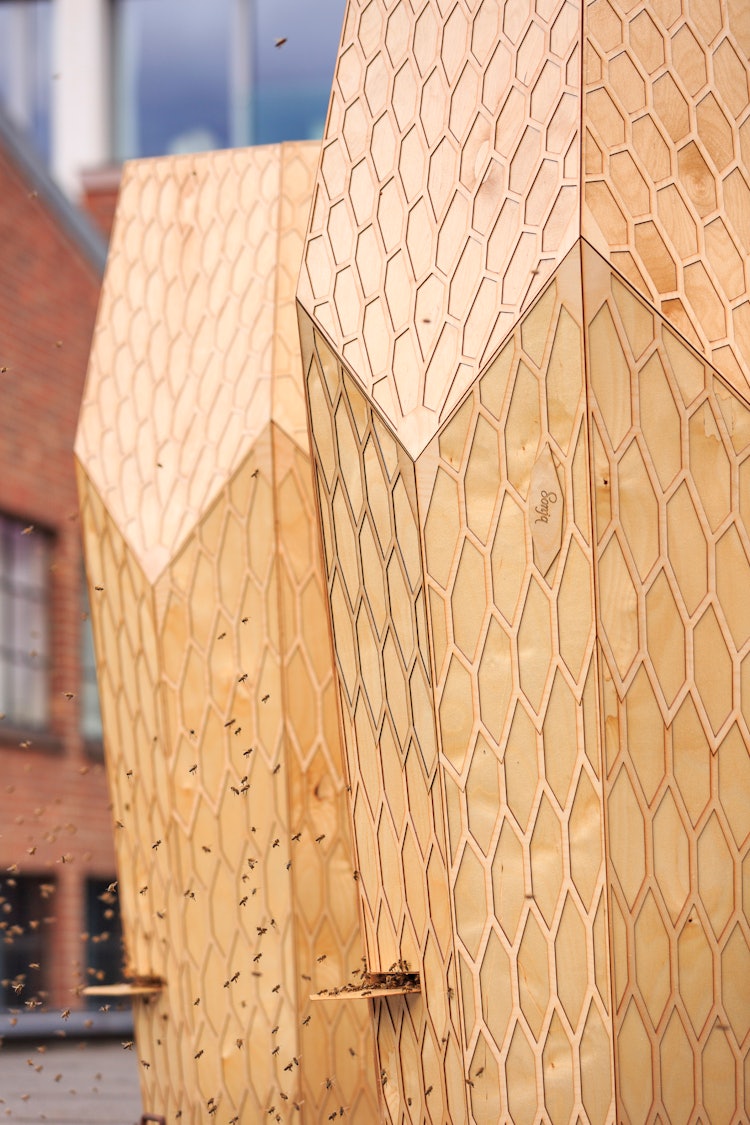
Photo: Morten Brakestad
Today, the Akerselva river is surrounded by local farms and green spaces, supplying access to pollen, nectar and the water, as well as providing an ideal backyard for bee habitats to flourish. The Vulkan Beehives perch on the roof between Mathallen and the contemporary dance center Dansens Hus, and are home to two queens, one of whom is affectionately named Sonja after the queen of Norway.
An on-site urban beekeeper tends to the bees`needs daily, aided by monitoring devices that track rainfall, temperature and the amount of honey they produce.
Some of the honey is sold in the shops downstairs at Mathallen.
Around 160,000 bees thrive inside the two hives-our densest housing project to date.
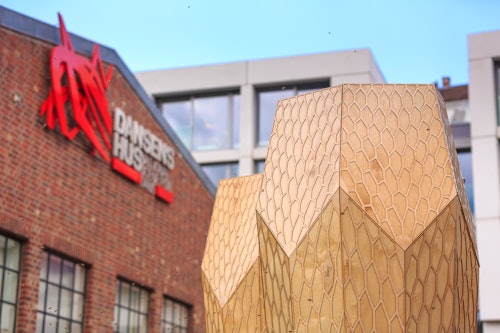
Photo: Morten Brakestad
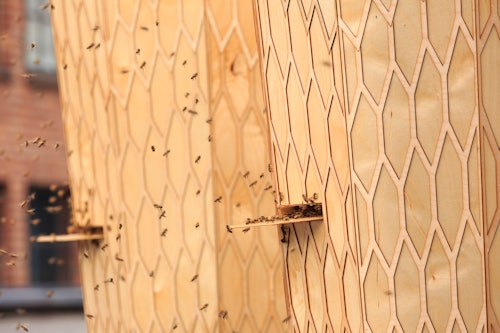
Photo: Morten Brakestad
